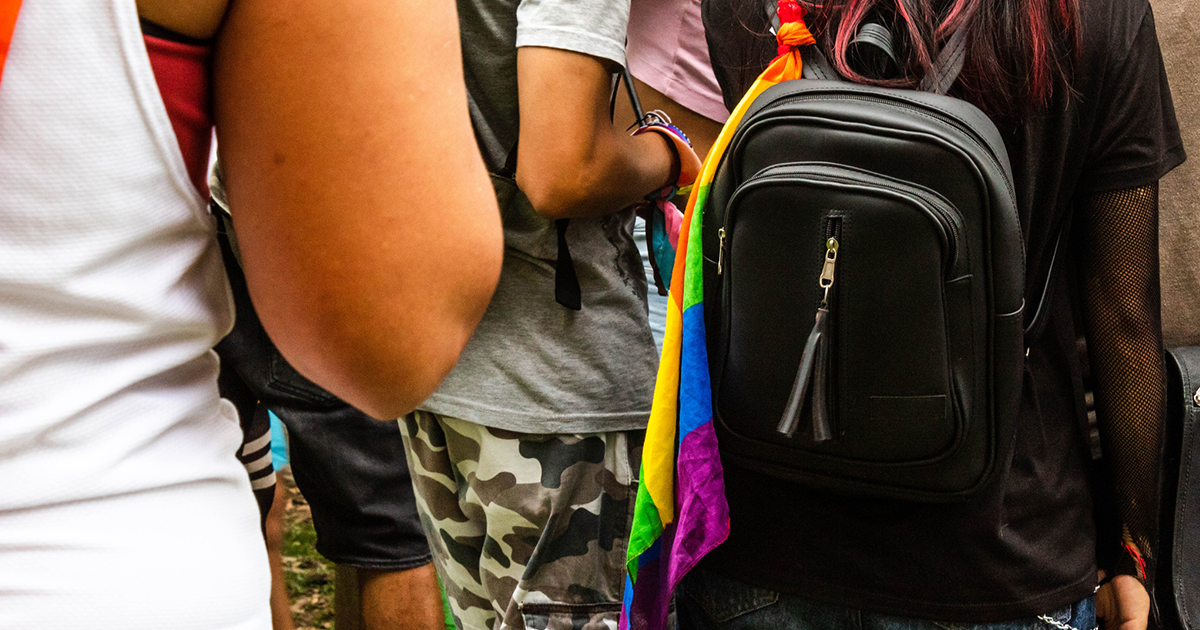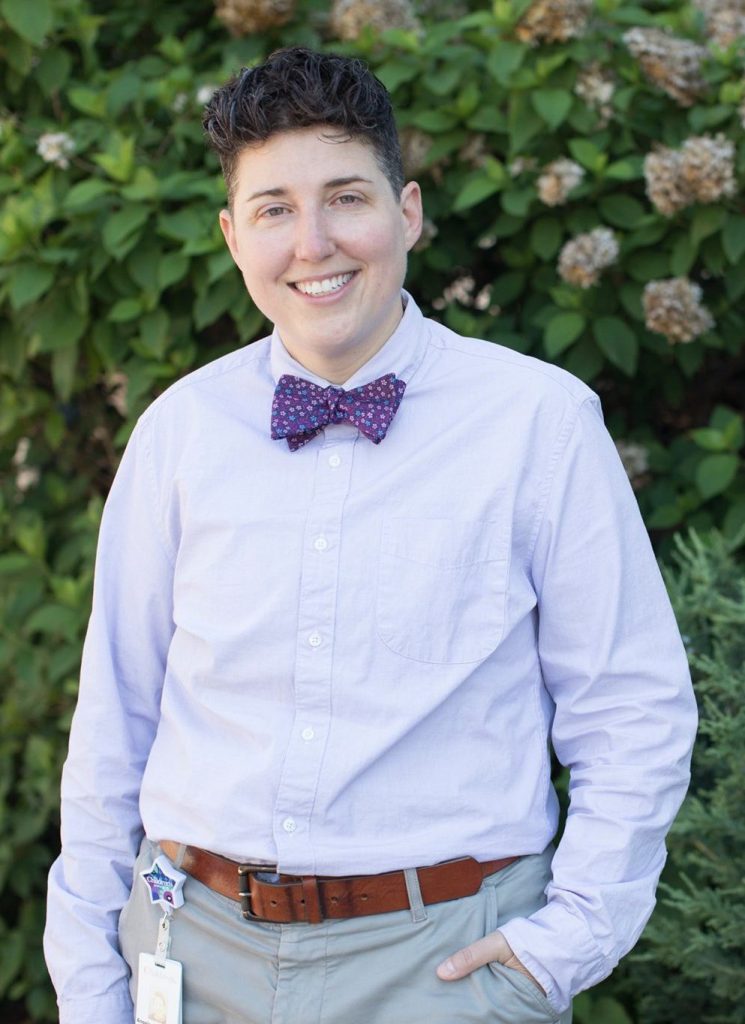
As a parent of three elementary school kids, each fall in our house brings the excitement of backpacks filled with school supplies, the challenge of learning new classrooms and teachers, and the anticipation of seeing friends after summer break. But for some kids, back to school can mean back to bullying. This is especially true for kids who identify as LGBTQ+.
As a primary care pediatrician for the last 17 years, I have certainly taken care of my fair share of kids who have been bullied in school, including both verbal and physical harassment. As a pediatrician in the Gender Health program for the last four years, stories of bullying, including online and school-based harassment, are almost universal for the patients who seek care in our clinic.

Get the facts
Not only are LGBTQ+ kids more likely to be targeted for verbal harassment and physical violence, but they are also more likely to experience this from not only peers, but teachers and school administrators as well. It’s not just their peers who are using the wrong name and pronouns or derogatory slurs toward LGBTQ+ youth, but the adults who are supposed to be interrupting this kind of behavior.
Facts about Minnesota
According to national surveys, close to 80% of LGBTQ+ students experience some form of bullying or harassment in school, with LGBTQ+ students hearing an anti-gay slur as frequently as 26 times a day, or once every 15 minutes. How do we know this is true in Minnesota? Every three years, students in grades 5, 8, 9 and 11 fill out what’s called the Minnesota Student Survey. The survey’s goal is to gauge how young people in our state are doing.
Results from 2022 show stark differences when it comes to who is being bullied at school. For example, among 8th grade boys who identified as straight/heterosexual, 6% reported being bullied daily in the past month. But among 8th grade boys who identified as LGBTQ+, 30% reported being bullied daily in the past month.
A state law called the Safe and Supportive Schools Act requires Minnesota schools to develop and enforce policies that protect students from bullying. Unfortunately, the law hasn’t been a cure all and is applied to different degrees in school districts across the state. Bullying is still a significant issue for students, and the number one reason students are bullied, in Minnesota and across the country, is around issues of sexual orientation and non-conforming gender behaviors and dress.
How to counteract bullying
Here are four ways parents and kids can counteract bullying.
Identify safe and supportive adults
The biggest protective factor for kids in school is identifying safe and supportive adults. One supportive adult in a LGBTQ+ young person’s life can reduce their risk of attempting suicide by 40%. Early in the school year, or even before it starts, parents should talk with their kids about which adults at school they can trust, which adults they can talk to if they’re not feeling safe. Parents can also check in with these trusted adults to let them know their student may need support.
Identify safe and supportive peers
Another important way to help kids feel safe at school is to help them identify safe and supportive peers. Which classmates can they trust, talk with if they’re not feeling safe? Identifying trusted adults and peers early helps kids know they have a safety net in place if they need it.
Bystander tips
Kids who see a friend being bullied can sometimes feel helpless. Parents can talk with their kids about helpful ways to handle that situation. Often kids who are being picked on will freeze. This is where their friends can help; not by saying or doing anything to the bully, but by stepping in and removing their friend from the situation; simply going up to their friend and saying, “Hey, come with me,” then guiding them away and finding a trusted adult. Parents of kids who are being bullied can also share these bystander tips with the parents of their child’s friends, so they can teach their kids how to help.
In our home with my kids, we talk about standing up for our friends when they need it and speaking up when we witness something that isn’t right. We teach our kids to say something when they see something, and if the behavior doesn’t stop, to go get or tell a trusted adult.
Model inclusive behavior
If you’re a parent of a child who isn’t LGBTQ+, having conversations about inclusive language and behavior, as well as modeling it, can help your child learn what’s appropriate when they meet new people or hear challenging conversations taking place at school.
For example, have conversations about different types of families; that not everyone has a mom and a dad. That it’s more inclusive to ask about someone’s “parents.” Have conversations about how to respectfully ask someone what their name is, what their pronouns are. Talking about the difference between a curious question and a private question. I encourage my kids to ask me openly any “curious” questions they have about their friends or new people that they meet, which has led to conversations about religious practices, disabilities, race and gender identity. As a parent, I am often prompting my kids to think about the “kind” thing to do, or what kind of friend they would like to be to others.
As someone who has both been verbally harassed and physically threatened because of my identity, I can tell you that at any age and in any circumstance, bullying hurts and causes long lasting damage. All kids deserve to go to school without being picked on or hearing slurs and negative language to describe their identities. We all have the power to be the change that we want to see in the world. Kids getting bullied because of who they are, who they love or who is in their family doesn’t have to continue. If you agree, do your part. Talk to your own kids and your friends who have kids. Spread the word. Be the change.

Dr. Kade Goepferd, (they/them)
Chief education officer and medical director of the Gender Health program
Dr. Kade Goepferd, (they/them), is the chief education officer, pediatrician and medical director of the Gender Health program at Children’s Minnesota. Dr. Goepferd is an advocate for advancing equitable health care for all children – including trans and gender-diverse youth. They have been named a Top Doctor by both Minneapolis/St. Paul Magazine and Minnesota Monthly for the last several years and gave their first TED talk, “The Revolutionary Truth about Kids and Gender Identity” at TEDx Minneapolis in 2020.
Follow me on Twitter, LinkedIn and Instagram.